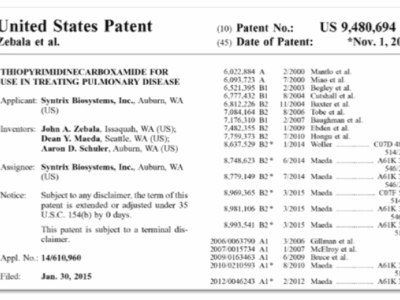– Safety and efficacy data will be presented for first-in-class CXCR1/2 inhibitor SX-682 in combination with pembrolizumab in patients with metastatic melanoma with disease progression on anti–PD-1 therapy –
– SX-682 demonstrated activity reflected by objective responses and clinically meaningful disease control –
– ORR, DCR, PFS and OS all depended significantly (P < 0.05) on SX-682 dose in alignment with its pharmacodynamics –
AUBURN, WASHINGTON — Dr. Sapna Patel from the MD Anderson Cancer Center will present interim results for the oral CXCR1/2 inhibitor SX-682 in metastatic melanoma during the May 31, 2024 afternoon session of the meeting of the American Society of Clinical Oncologists (ASCO). Results support the clinical activity of SX-682 in metastatic melanoma (Abstract).
Outcomes for patients with melanoma remain sobering despite access to available immunotherapies, as the majority of patients are resistant or become refractory to checkpoint blockade with no approved treatments. CXCR1 and CXCR2 (CXCR1/2) signaling mediate myeloid immunosuppression and melanoma growth, inversely correlating with anti-PD-1 response and patient survival. As a single agent, SX-682 increases tumor CD8+ T cell infiltration and inhibits tumor growth in mouse melanoma models.
This dose-escalation with expansion trial (NCT03161431) evaluated pembrolizumab and escalating doses of SX-682 (25 – 400 mg orally BID) in patients with melanoma in a 21-day cycle. Patients must have had progressive disease (PD) on prior anti-PD-1. Mucosal melanoma and asymptomatic brain metastases were allowed. Escalation cohorts had a 21-day SX-682 monotherapy (MONO) run-in. Response assessment by RECIST 1.1 was every 2 cycles during combination (COMBO) treatment. The primary endpoint was safety: adverse events (AEs), dose-limiting toxicity (DLT) and maximally-tolerated dose (MTD). Secondary endpoints included objective response rate (ORR; complete [CR] + partial [PR] response), disease control rate (DCR; CR + PR + stable disease [SD]) and overall survival (OS).
As of October 2023, 51 patients were enrolled and treated; median age of 65 (range 24-91), 55% male, 61% elevated LDH, 39% BRAF mutated. All patients received prior anti-PD-1, 37 (73%) received combined anti-PD-1 and anti-CTLA-4, and 23 (45%) had ≥ 3 prior therapies. Steady-state blood SX-682 was dose-proportional. No MONO DLT or MTD was identified. The 200 mg dose cohort was expanded in COMBO based on safety and pharmacodynamics: mg BID dose (n) = 25 (3), 50 (3), 100 (6), 150 (8), 200 (31). Any grade and grade 3/4 treatment-related AEs (TRAEs) occurred in 75% and 43%, respectively, and discontinuation (DC) due to TRAEs in 20% (when uncomplicated neutropenia, a permitted effect from CXCR2 inhibition on bone-marrow trafficking, was excluded there were 25% grade 3/4 TRAEs and 12% DC [rash, transaminitis]). There was no infectious signal.
At the 200 mg dose, the ORR was 21% in 19 evaluable patients (3 PR + 1 CR) and the DCR was 63% (8 SD + 4 PR). DCR significantly depended on SX-682 dose (P vs. ≤100 mg): 0% (0/9) at ≤100 mg, 50% (3/6) at 150 mg (P = 0.0440) and 63% (12/19) at 200 mg (P = 0.0028). All 15 patients with disease control had progressed on anti-PD-1 and anti-CTLA-4. Median OS was longer in patients in the 200 mg cohort (14.7 months; 95% CI, 10.5 – NR [not reached], n = 31) than in patients treated with ≤100 mg SX-682 (7.4 months; 95% CI, 5.0 – NR; n = 10).
SX-682 combined with pembrolizumab had a tolerable safety profile and activity reflected by objective responses and clinically meaningful disease control in heavily pretreated melanoma patients with progression on anti-PD-1 and anti–CTLA-4.
About SX-682
SX-682 is an oral allosteric small-molecule inhibitor of CXCR1 and CXCR2 (CXCR1/2) being investigated in several Phase 1/2 clinical trials. CXCR1/2 is a signaling pathway that acts as a “master switch” in the tumor microenvironment. It is involved in the recruitment of immunosuppressive MDSCs and autocrine growth of disease-initiating leukemic stem cells in AML and myelodysplastic syndromes (MDS). CXCR2 overexpression is predictive of transfusion dependence in MDS. CXCR2 inhibition reduces proliferation of leukemic cell lines and primary MDS/AML patient samples in vitro. SX-682 has been validated in major solid tumor models, where it exhibits mono-agent activity, blocks metastasis, depletes MDSCs, activates infiltration and killing by immune effector cells, reverses chemo-resistance, and enhances immune-checkpoint blockade. More information about clinical trials with SX-682 is available at https://clinicaltrials.gov/search?intr=SX-682.
About Syntrix
is a pharmaceutical company committed to discovering and delivering innovative therapies to solve the most difficult clinical problems. Convergent Science & Strategy. Breakthrough Medicines.
Disclosure Notice
This release contains forward-looking information that is based on company management’s current beliefs and expectations and are subject to currently unknown information, risks and circumstances. Actual results may vary from what is projected. Syntrix does not undertake any obligation to publicly update these forward-looking statements, whether as a result of new information, future events or otherwise.
Media Contact: Aaron Schuler, PhD, 253-833-8009, x21



